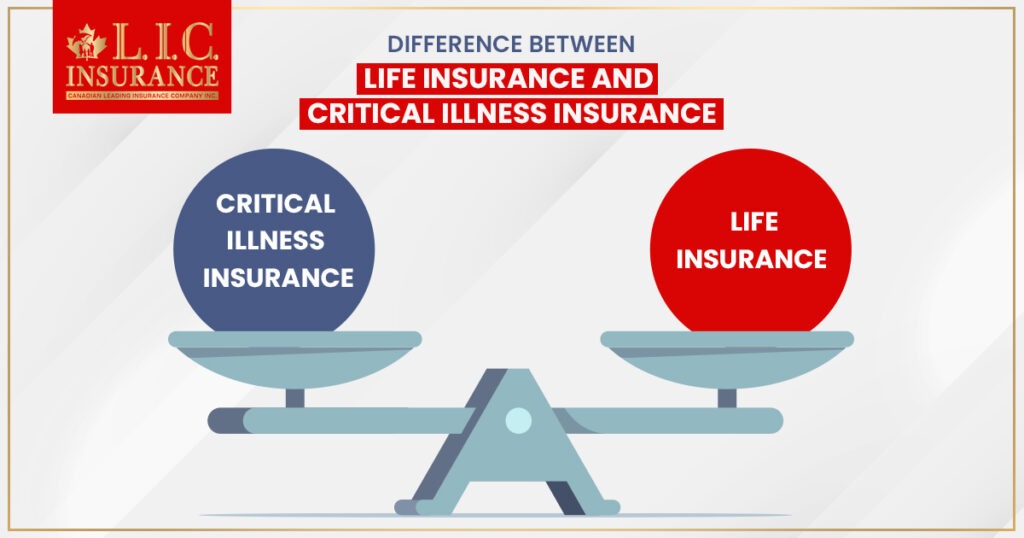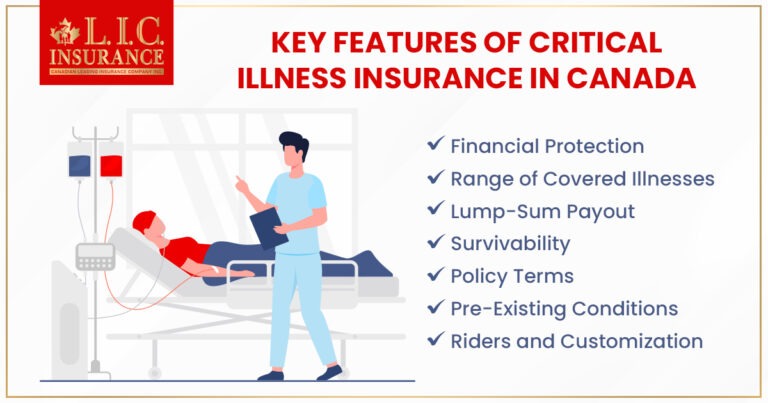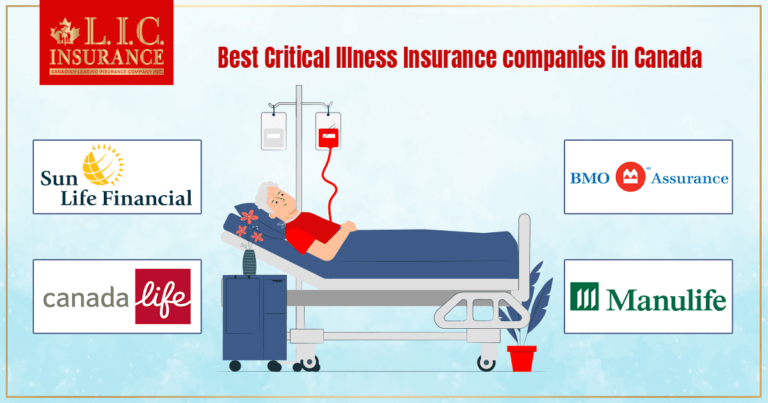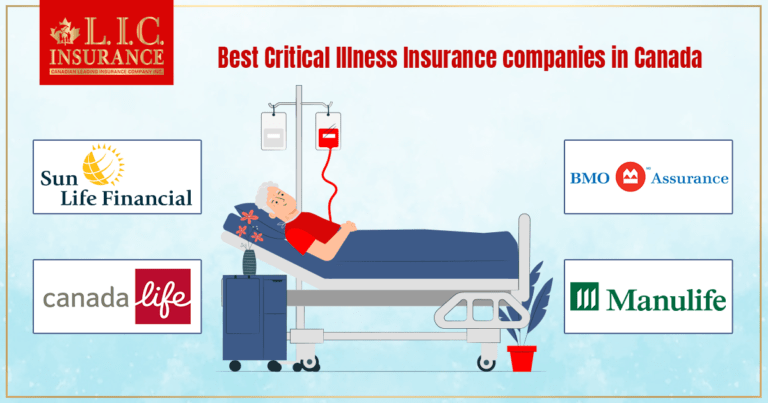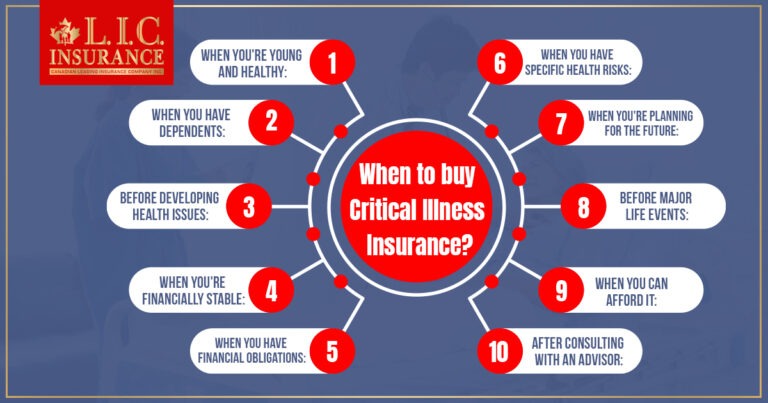How To Pick The Right Insurance Broker?
By Candian LIC, September 14, 2023, 8 Minutes
Common questions
- Life Insurance can protect your family from any financial crisis
- You leave a completely tax-free inheritance to your dear ones or beneficiaries
- Life Insurance can pay for your funeral expenses
- You can clear your debts and loans with Life Insurance
- How To Pick The Right Insurance Broker?
- Who Is An Insurance Broker?
- What does an Insurance Broker do?
- Can we trust an Insurance Broker?
- Do Insurance Brokers Understand the Products They Sell?
- The Benefits of Working with an Insurance Broker in Toronto
- Some Tips On Choosing The Right Insurance Broker
- Process of Application
- What is the cost of buying Insurance from the Best Insurance Broker in Canada?
- Other Insurance Buying Options
- Final Thoughts

Getting insurance on your own can be very risky and challenging compared to buying a car or a home. There are so many things to consider, and that’s why you should consider hiring a professional insurance broker. They can help you choose the right policy and coverage for that policy. However, the question here would be, how can you choose the best insurance broker in Canada? Several factors play a crucial role in choosing an insurance broker, and we will discuss them, so you can have a better idea of Why you should Choose an Insurance Broker to Purchase an Insurance Plan. If you are looking for the best insurance broker in Toronto, you can contact Canadian LIC and get in touch with our team. We will be glad to help you out with all your insurance needs.
Learn more on – Why you should Choose an Insurance Broker to Purchase an Insurance Plan
Who is an Insurance Broker?
A professional insurance broker helps you purchase a policy that meets your insurance needs. They take a practical step-by-step approach starting with
- noting down your requirements
- comparing several policies
- sharing the available policies that fulfill your needs
- and getting you an affordable monthly premium
You should also know that insurance brokers can help in customizing the policy contract for you as well. If you want to add a clause or change the terms and conditions of the agreement, your insurance broker ensures that the changes are mentioned in the paperwork. If you have any queries, you can get in touch with Canadian LIC in Toronto today, and we will be happy to resolve all of them.
What does an Insurance Broker do?
An insurance broker possesses all the knowledge of the different types of insurance available in the market and provides the best advice on what might be the best insurance option for you as per your lifestyle, health, age, and available assets. Another amazing thing is that these insurance brokers will act as agents doing your paperwork and handling claims that arise.
Related Posts
- Why Should You Use An Insurance Broker To Purchase An Insurance Plan?
- Why Should You Use An Insurance Broker To Purchase An Insurance Plan?
- Why Should You Use An Insurance Broker To Purchase An Insurance Plan?
- Why Should You Use An Insurance Broker To Purchase An Insurance Plan?
Can we trust an Insurance Broker?
Insurance brokers usually get commissions from the insurance companies for the many types of insurance they sell if they are able to sell it successfully. These insurance agents work with a number of insurance providers, so there are very few chances of them having a monetary bias for any one particular product. Hence they are unbiased and impartial parties and provide you with a policy that would be in your budget as per your requirements from so many different insurance companies in their knowledge.
Do Insurance Brokers Understand the Products They Sell?
You will definitely be able to make a much better decision if you buy insurance through an insurance broker rather than directly from any insurance company. An insurance broker’s job is to have all the best knowledge about the best insurances available in the market from the best insurance companies and hence will advise you for one which is perfect for your budget. These insurance brokers in Canada are very well aware of the application requirements, coverage terms, and pricing.
Whatever insurance you are looking for, be it critical illness insurance, disability insurance, life insurance, etc., you can easily buy through an insurance broker in Ontario after comparing them with each other. Mostly all the insurance brokers cover all types of insurance, but you might find a few who specialize in specific ones. So if you want an expert opinion on a particular insurance, you can go to these types of insurance brokers in Canada.
The Benefits of Working with an Insurance Broker in Toronto
Alongside helping you choose the ideal insurance policy for you and your family, working with expert insurance brokers has its advantages. Here’s how you will benefit from hiring an insurance broker in Toronto before choosing a policy:
- Experienced and best insurance brokers in Canada always keep themselves up to date with the latest trends in the insurance market; they can help you choose the ideal insurance plan based on your needs and industry standards.
- Your insurance broker in Toronto will be connected with many companies, and that gives them access to several insurance products. Once they know all your needs, they can compare multiple plans and policies and present the ones suited to your requirements and within your budget.
- Once you have selected a policy, they can help negotiate premiums and see that you get an affordable monthly rate for the plan you choose.
- If you are not sure which insurance policy is ideal for you, an insurance broker can share their unbiased advice so you can make an informed decision.
- They can also help in settling claims. Once you have submitted your claim, your insurance broker will follow up to ensure the claim is processed correctly.
- An insurance broker can help you settle legal disputes with the insurance company as well.
Get The Best Insurance Quote From Canadian L.I.C
Call 1 844-542-4678 to speak to our advisors.

Some Tips On Choosing The Right Insurance Broker
Although there is no established formula for finding the right broker for your insurance needs, what you should look for is someone who has a minimum set of attributes to shift through several policies and identify the right option for you. Here are some tips that can help you hire an insurance broker:
- Visit their website and have a look at their customer reviews. This will give you a better insight into how they have worked with their previous customers.
- Check if the insurance broker works with several companies; if they do, that would mean that they are well-established in the industry.
- You can ask them for proof of their experience, as all registered insurance brokers must possess a minimum set of qualifications.
- Ask for a consultation, and during the first meeting, you can resolve all the queries you may have.
- Also, when you are searching for an insurance broker, you should pay close attention to their availability, as well as how long they take to return phone calls or respond to emails. Choose an insurance broker who is always prompt with their replies.
Process of Application
During the Application process, certain documents will be needed from you, such as:
- Personal health records
- Lifestyle habits
- Income
- Assets and Liabilities list
There are certain insurance policies that might even require you to go for a Health Exam before the issue of the policy, but it has become really rare now.
Whatever situations you might be facing for the type of insurance you are dealing with, you will have complete guidance and support from the insurance broker in Toronto you are working with. A few things to consider before making your decision to buy your policy are as follows:
- Is the policy fulfilling your needs?
- Clarity of the coverage terms and the fine print
- Are you getting the best value for the plan you are going for?
If in case you have missed anything or want to add to your plan, your broker should be able to do that for you effortlessly. Once you have made up your mind, the insurance broker will complete the application process and will proceed with the payment process for you. If you are required to make a claim, the broker might also support you after the coverage gets life.
To learn more about the application process, you can read – Getting an Insurance Policy.
What is the cost of buying Insurance from the Best Insurance Broker in Canada?
An insurance broker is paid by insurance companies and not by clients. They cannot charge a fee; if they do, then it might be a scam.
You only have to pay the fee for the insurance policy you buy but not any fee to the broker. The prices of different insurance policies vary to a great extent as per their type and coverage.
In fact, if you buy insurance from an insurance broker in Canada, it might be cheaper than buying directly from the insurance company. This happens because the insurance broker provides you with various discounts and also negotiates the price of the plan. You can even take the benefits of rebates by bundling different policies together.
Thus to put it in simple terms, you might experience a vast difference in the cost of insurance when you buy it through a broker but not in any case, you will have to pay fees to the broker. You will only have to pay the price of the insurance policy you are buying after you have made the decision to buy it.
Get The Best Insurance Quote From Canadian L.I.C
Call 1 844-542-4678 to speak to our advisors.
Other Insurance Buying Options
You can even buy your insurance directly through the insurance company or work with an agent if you are not interested in buying through a broker. But if you do so, then you will lose the biggest benefit of comparing different insurances available in the market. If you decide to work with an agent, it is best advised to do your proper research so that you are able to grab the best deal for your plan.
Final Thoughts
Hiring an insurance broker can be difficult, but if you choose our team at Canadian LIC in Toronto, you will be hiring a team of professionals who can help you get a tailored insurance policy at affordable premium rates. Please schedule a consultation today; we look forward to meeting you. We are based in Toronto.
The above information is only meant to be informative. It comes from Canadian LIC’s own opinions, which can change at any time. This material is not meant to be financial or legal advice, and it should not be interpreted as such. If someone decides to act on the information on this page, Canadian LIC is not responsible for what happens. Every attempt is made to provide accurate and up-to-date information on Canadian LIC. Some of the terms, conditions, limitations, exclusions, termination, and other parts of the policies mentioned above may not be included, which may be important to the policy choice. For full details, please refer to the actual policy documents. If there is any disagreement, the language in the actual policy documents will be used. All rights reserved.
Please let us know if there is anything that should be updated, removed, or corrected from this article. Send an email to [email protected] or [email protected]


